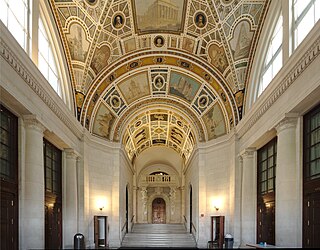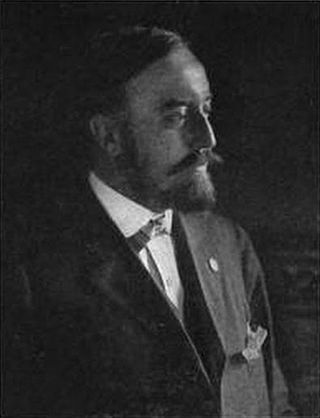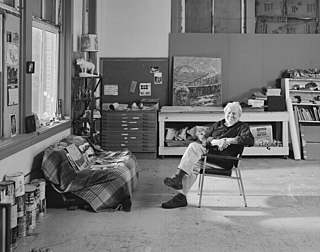
Andy Warhol was an American visual artist, film director and producer. A leading figure in the pop art movement, Warhol is considered one of the most important artists of the 20th century. His works explore the relationship between artistic expression, advertising, and celebrity culture that flourished by the 1960s, and span a variety of media, including painting, sculpture, photography, and filmmaking. Some of his best-known works include the silkscreen paintings Campbell's Soup Cans (1962) and Marilyn Diptych (1962), the experimental film Chelsea Girls (1966), and the multimedia events known as the Exploding Plastic Inevitable (1966–67).

Carnegie Mellon University (CMU) is a private research university in Pittsburgh, Pennsylvania, United States. The institution was established in 1900 by Andrew Carnegie as the Carnegie Technical Schools. In 1912, it became the Carnegie Institute of Technology and began granting four-year degrees. In 1967, it became Carnegie Mellon University through its merger with the Mellon Institute of Industrial Research, founded in 1913 by Andrew Mellon and Richard B. Mellon and formerly a part of the University of Pittsburgh.

Oakland is the academic and healthcare center of Pittsburgh and one of the city's major cultural centers. Home to three universities, museums, hospitals, shopping venues, restaurants, and recreational activities, this section of the city also includes two city-designated historic districts: the mostly residential Schenley Farms Historic District and the predominantly institutional Oakland Civic Center Historic District, as well as the locally-designated Oakland Square Historic District.

The College of Fine Arts (CFA) at Carnegie Mellon University in Pittsburgh, in the U.S. state of Pennsylvania oversees the Schools of Architecture, Art, Design, Drama, and Music along with its associated centers, studios, and galleries.

James Warhola is an American artist who has illustrated more than two dozen children's picture books since 1987.

The Carnegie Museum of Art is an art museum in the Oakland neighborhood of Pittsburgh, Pennsylvania. The museum was originally known as the Department of Fine Arts, Carnegie Institute and was formerly located at what is now the Main Branch of the Carnegie Library of Pittsburgh. The museum's first gallery was opened for public use on November 5, 1895. Over the years, the gallery vastly increased in size, with a new building on Forbes Avenue built in 1907. In 1963, the name was officially changed to Museum of Art, Carnegie Institute. The size of the gallery has tripled over time, and it was officially renamed in 1986 to "Carnegie Museum of Art" to indicate it clearly as one of the four Carnegie Museums.

Carnegie Museums of Pittsburgh is a nonprofit organization that operates four museums in Pittsburgh, Pennsylvania, United States. The organization is headquartered in the Carnegie Institute and Library complex in the Oakland neighborhood of Pittsburgh. The Carnegie Institute complex, which includes the original museum, recital hall, and library, was added to the National Register of Historic Places on March 30, 1979.
Philip Martin Pearlstein was an American painter best known for Modernist Realist nudes. Cited by critics as the preeminent figure painter of the 1960s to 2000s, he led a revival in realist art.

Henry Hornbostel was an American architect and educator. Hornbostel designed more than 225 buildings, bridges, and monuments in the United States. Twenty-two of his designs are listed on the National Register of Historic Places, including the Oakland City Hall in Oakland, California and the Soldiers and Sailors Memorial Hall and Museum and University Club in Pittsburgh, Pennsylvania.

The Carnegie Mellon School of Art at Carnegie Mellon University in Pittsburgh, Pennsylvania is a degree-granting institution and a division of the Carnegie Mellon College of Fine Arts. The School of Art was preceded by the School of Applied Design, founded in 1906. In 1967, the School of Art separated from the School of Design and became devoted to visual fine arts.
Robert C. Wilburn is the director of Carnegie Mellon University Heinz College's Washington, DC campus as well as a Distinguished Service Professor at the college. Prior to this position he was the first president and Chief Executive Officer of the Gettysburg Foundation. He served as president and CEO of the Carnegie Institute in Pittsburgh and as president of Colonial Williamsburg Foundation. Under his leadership, the number of customers, members, donors, and volunteers increased sharply within each organization. The merger of the Buhl Science Center with the Carnegie Institute and the construction of a new $40 million Kamin Science Center are among his notable accomplishments. While at the Carnegie Institute, Wilburn also contributed to the founding of the Andy Warhol Museum by negotiating gifts of more than a thousand paintings and drawings from the Warhol and DIA Foundations and by raising funds to secure and renovate a historic, seven-story building in downtown Pittsburgh. The Warhol Museum is probably the largest museum in the world dedicated to a single artist and may have been the largest gift ever given to a museum at one time, in value.
Matt Wrbican (1959–2019) was an American archivist and authority on the life of the artist Andy Warhol. He earned his BFA in Painting and MFA in Intermedia/Electronic Art from Carnegie Mellon University (CMU), where he studied with Bruce Breland. He began working with the Warhol Archive in 1991 in New York City and became Chief Archivist of The Andy Warhol Museum in Pittsburgh, Pennsylvania, United States. He managed the Archive and Warhol's Time Capsules for more than two decades at the Warhol Museum, where he unpacked, processed, preserved, and documented an estimated 500,000 objects. His last book is A is for Archive: Warhol's World from A to Z. He also exhibited his artwork at the Pittsburgh Center for the Arts and Galleries. He died on Saturday, June 1, 2019, after a four-year battle with brain cancer.

The Miller ICA at Carnegie Mellon University is the contemporary art gallery of Carnegie Mellon University in Pittsburgh, Pennsylvania.

The Andy Warhol Museum is located on the North Shore of Pittsburgh, Pennsylvania, in the United States. It is the largest museum in North America dedicated to a single artist. The museum holds an extensive permanent collection of art and archives from the Pittsburgh-born pop art icon Andy Warhol.

Joyce Kozloff is an American artist known for her paintings, murals, and public art installations. She was one of the original members of the Pattern and Decoration movement and an early artist in the 1970s feminist art movement, including as a founding member of the Heresies collective.

Robert L. Qualters, Jr. is an American painter, installation artist and printmaker based in Pittsburgh, Pennsylvania. His work encompasses traditional painting, as well as murals, and collaborations with other Pittsburgh-based artists across several disciplines. He is associated with the Bay Area Figurative Movement of Representational Painting.
Samuel Rosenberg (1896–1972) was an American artist and Professor at Carnegie Mellon University in Pittsburgh, PA. He showed his work at the Museum of Modern Art, the Whitney Museum in New York, the National Academy of Art in Washington, the Corcoran Gallery, and in the Pennsylvania Academy of Fine Arts. He was a beloved art teacher, and some of his students were Mel Bochner, Philip Pearlstein and Andy Warhol.
Rochelle Blumenfeld is an American artist from Pittsburgh, Pennsylvania. Her paintings have been exhibited in many public and private collections, including the Carnegie Museum of Art. Her work has been included in the Bicentennial Exhibit of “American Painters in Paris” in Paris, France, Copley Society of Art, Boston, Dunfermline Fife, Scotland, and the Westmoreland Museum of American Art, Greensburg, Pennsylvania.
Alisha B. Wormsley is an interdisciplinary artist and cultural producer. Her work is about collective memory and the synchronicity of time, specifically through the stories of women of color. She states her work is "the future, and the past, and the present, simultaneously."













